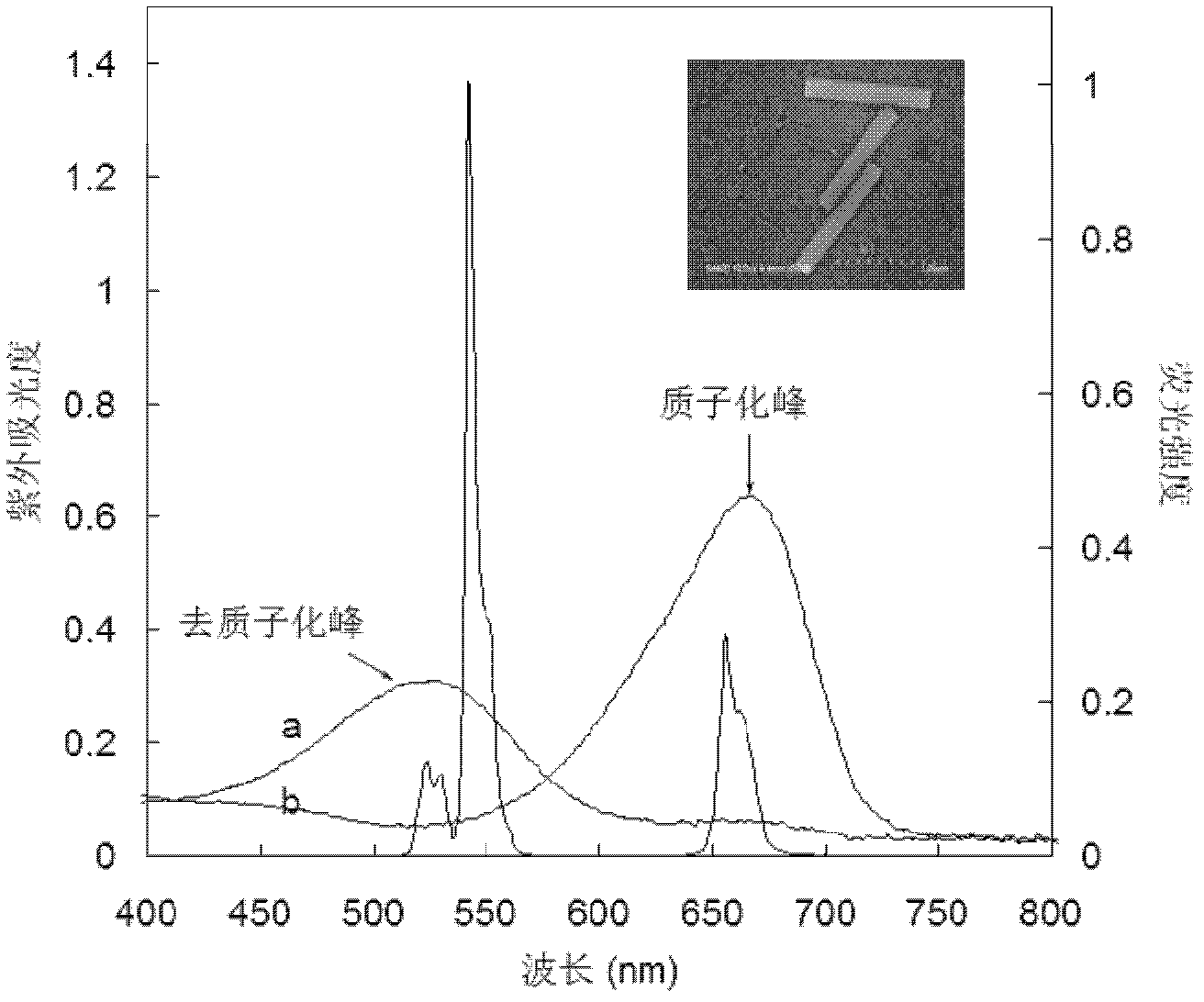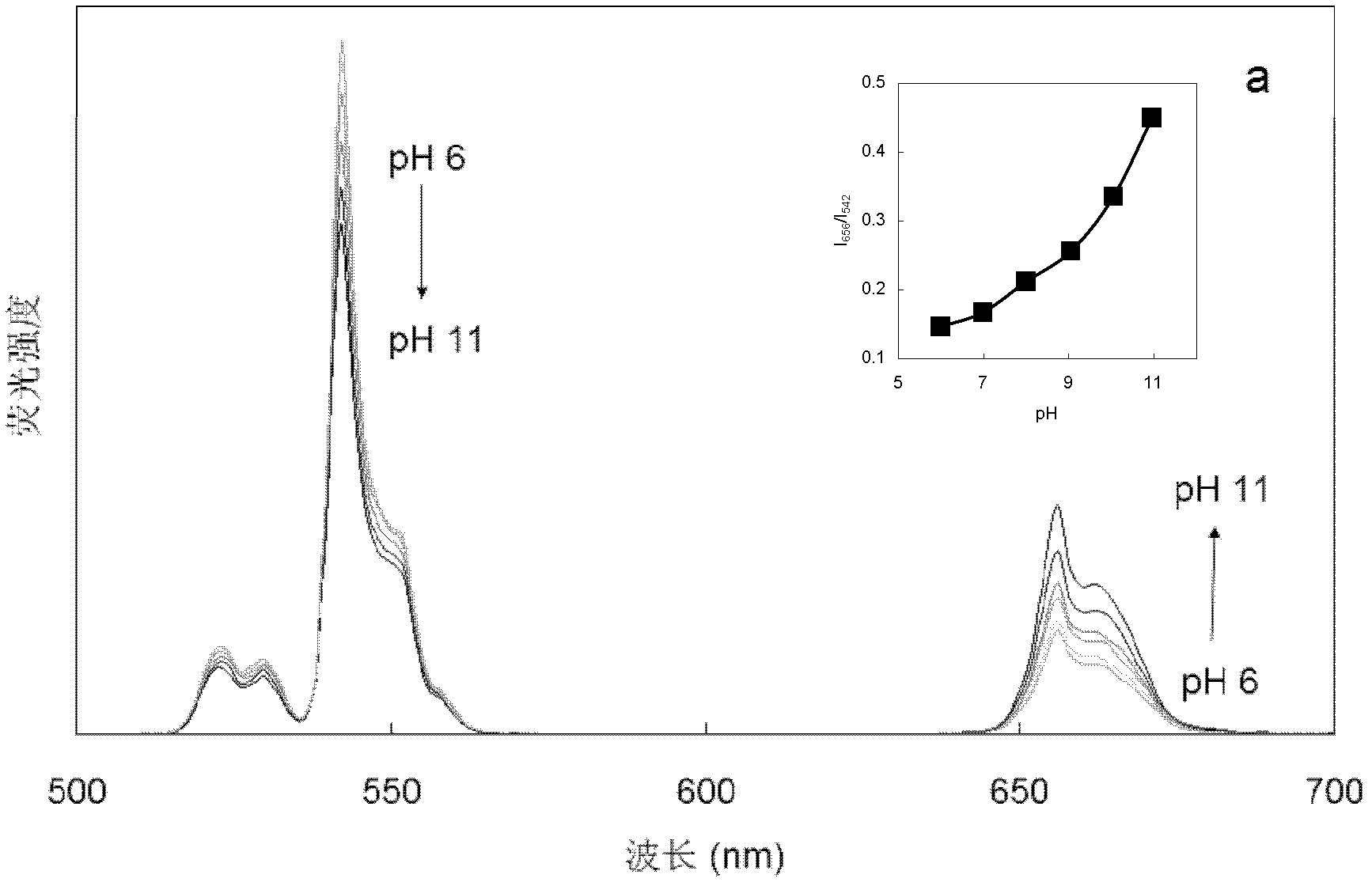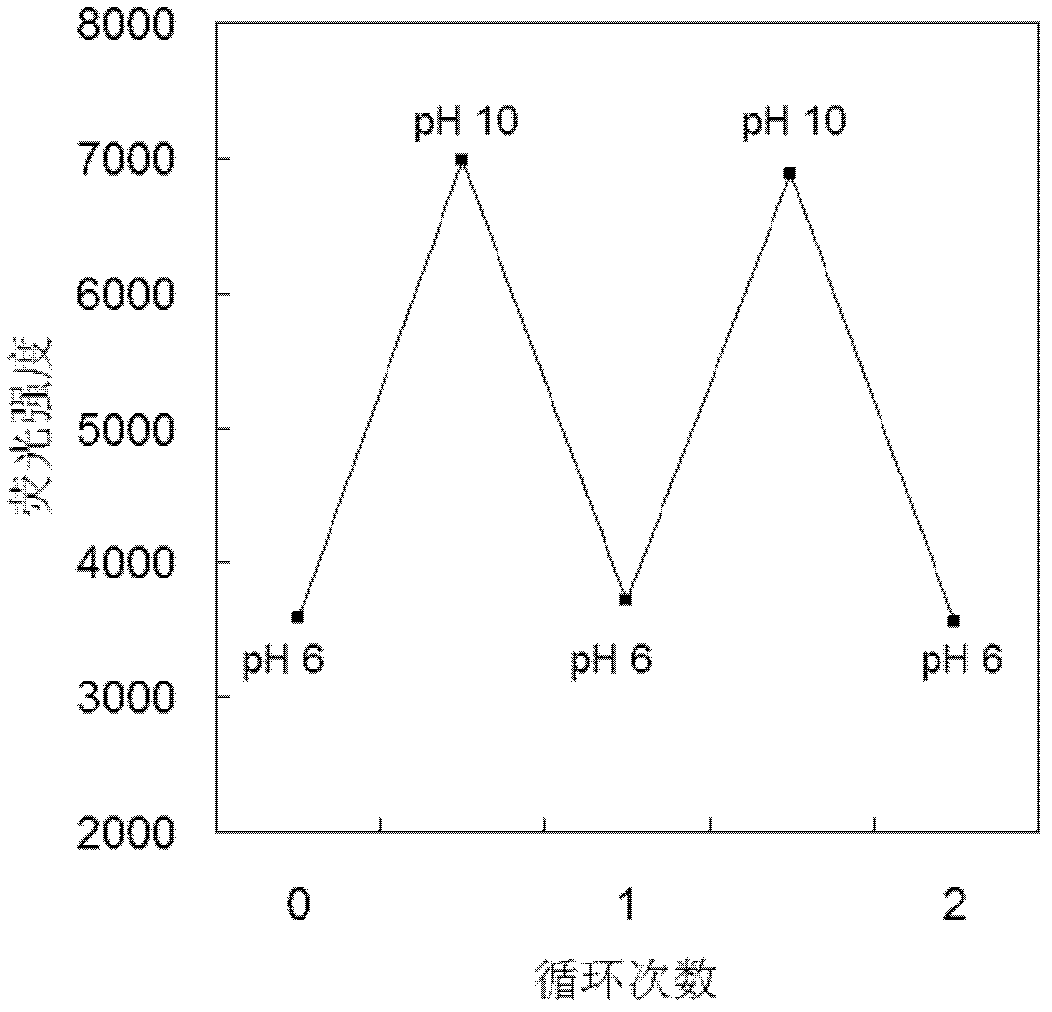Optical ion sensing membrane for detecting pH and preparation method and application thereof
A technology for sensing membranes and ions, applied in the field of chemical detection, can solve the problems such as the inability to achieve continuous and repeated detection, and achieve the effect of high quantum yield
- Summary
- Abstract
- Description
- Claims
- Application Information
AI Technical Summary
Problems solved by technology
Method used
Image
Examples
Embodiment 1
[0036] Example 1: NaYF 4 : Synthesis of Er, Yb Nanorods.
[0037] NaYF 4 : Er, Yb nanorods were synthesized according to literature 18 .
[0038] The specific steps are: sodium hydroxide (1.2g, 30mmol), water (7mL), ethanol (12mL) and oleic acid (22mL) are mixed together and stirred to form a transparent solution. Under non-stop magnetic stirring, add a total amount of 1mmol rare earth chloride (2mL in total, 0.5M, the doping ratio of rare earth ions is according to the molar ratio: 78mol%Y+20mol%Yb+2mol%Er) aqueous solution, after stirring evenly 5 mL of 1M sodium fluoride solution was added dropwise. Stir the mixed solutions for about 10 min, transfer them to a 50 mL hydrothermal reactor, package, and hydrothermally treat at 195 °C for 16 h. After natural cooling, dissolve and collect the sample with cyclohexane, add ethanol to precipitate the sample, centrifuge, wash several times with ethanol and water, and then vacuum dry.
[0039] From the SEM characterization resu...
Embodiment 2
[0040] Example 2: Preparation of an optical ion-sensing membrane for pH detection.
[0041] Each component is made into 100mg mixture according to the weight percentage as follows:
[0042] Chromogenic ionophore ETH5418 0.41%;
[0043] Ion exchanger NaTFPB 0.45%;
[0044] NaYF 4 : Er, Yb nanorods (made in embodiment 1) 2.13%;
[0045] PVC 33.13%;
[0046] Plasticizer DOS 63.88%.
[0047] The above mixture was dissolved with 1 mL of THF. The resulting solution was shaken vigorously for 0.5 h and then sonicated for at least 0.5 h to obtain a homogeneous solution. Use a pipette to take 50 μL of the mixed solution and apply it evenly on a clean rectangular quartz plate. Before use, let the solvent evaporate in the dark for 0.5 hours to obtain an optical ion sensing membrane for pH detection. The thickness of the membrane is 5-7 μm.
[0048] During the detection, insert the quartz plate with the optode film vertically into the quartz cuvette with slots, put it into the sampl...
Embodiment 3
[0052] Example 3: Preparation of an optical ion-sensing membrane for pH detection.
[0053] Each component is made into 100mg mixture according to the weight percentage as follows:
[0054] Chromogenic ionophore ETH5418 0.38%;
[0055] Ion exchanger NaTFPB 0.44%;
[0056] NaYF 4 : Er, Yb nanorods (made in Example 1) 2.09%;
[0057] With PVC 33.15%;
[0058] Plasticizer NPOE 63.94%.
[0059] The above mixture was dissolved with 1 mL of cyclohexanone. The resulting solution was shaken vigorously for 0.5 h and then sonicated for at least 0.5 h to obtain a homogeneous solution. Use a pipette to take 50 μL of the mixed solution and apply it evenly on the top of the optical fiber. Before use, let the solvent evaporate in the dark for 0.5 hours to obtain an optical ion sensing membrane for pH detection. The thickness of the membrane is 5-7 μm.
PUM
| Property | Measurement | Unit |
|---|---|---|
| thickness | aaaaa | aaaaa |
| diameter | aaaaa | aaaaa |
| length | aaaaa | aaaaa |
Abstract
Description
Claims
Application Information
 Login to View More
Login to View More - R&D
- Intellectual Property
- Life Sciences
- Materials
- Tech Scout
- Unparalleled Data Quality
- Higher Quality Content
- 60% Fewer Hallucinations
Browse by: Latest US Patents, China's latest patents, Technical Efficacy Thesaurus, Application Domain, Technology Topic, Popular Technical Reports.
© 2025 PatSnap. All rights reserved.Legal|Privacy policy|Modern Slavery Act Transparency Statement|Sitemap|About US| Contact US: help@patsnap.com



